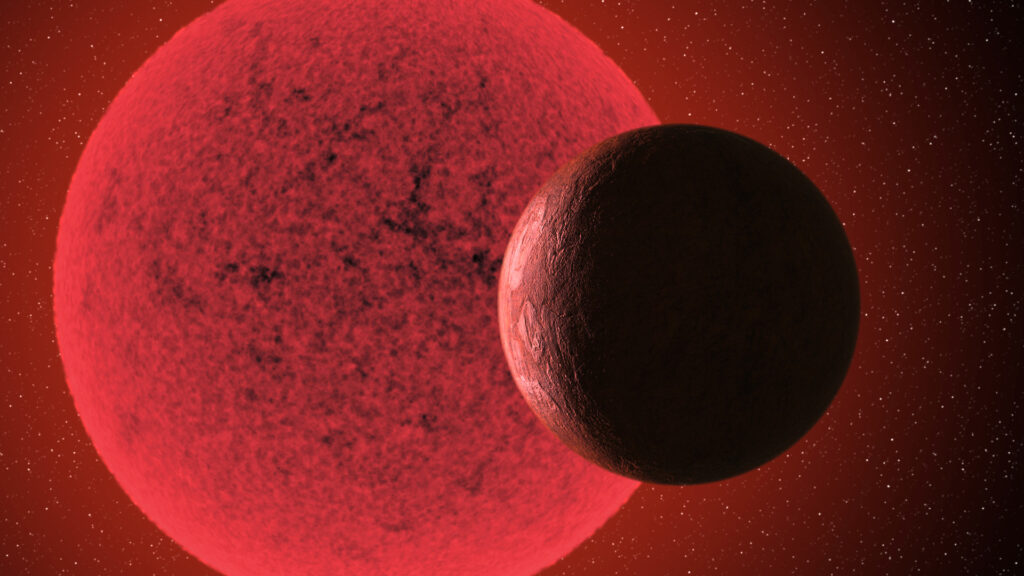An international team of researchers reported the discovery of two exoplanets. They orbit around close red dwarfs.

The discovery was made while examining data from the TESS telescope. It detected periodic fluctuations in the light of the red dwarfs TOI-6002 and TOI-5713, located 104 and 133 light-years away from Earth, respectively. Subsequent observations confirmed that they were caused by exoplanets orbiting around them.
Both exoplanets are super-Earths. This is the name given to bodies with masses higher than Earth’s, but much lower than Neptune’s. There are no such objects in our Solar System.
The first super-Earth found by TESS was designated TOI-6002 b. It has a radius of 1.65 Earth radii and a mass almost four times that of Earth. The planet’s orbit lies at a distance of about 0.06 a. e. (9 million km) from the star, with an orbital period of 10.9 days. The equilibrium temperature of TOI-6002 b is assumed to be 48 °C.
The second super-Earth TOI-5713 b is about 77% larger than Earth, and its mass is estimated to be 4.3 Earth-like. The exoplanet has an orbital period of 10.44 days and is also 0.06 a.u. away from its parent star. Its equilibrium temperature is 74 °C.
According to the researchers, the composition of the two super-Earths is not clear yet because of the rather large error in the mass determination. They may be both rocky and water-rich worlds.
It is also worth noting that TOI-6002 b receives 1.7 and TOI-5713 b – 2.4 times more energy from its star than the Earth receives from the Sun. Thus, both super-Earths are near the inner edge of the habitable zone of their systems. This makes them interesting targets for future research to study the evolution of exoplanets from hot but potentially habitable to Venus-like worlds.
Earlier we told you about how astronomers found a super-Earth neighboring a hot Jupiter.
According to Phys.org


